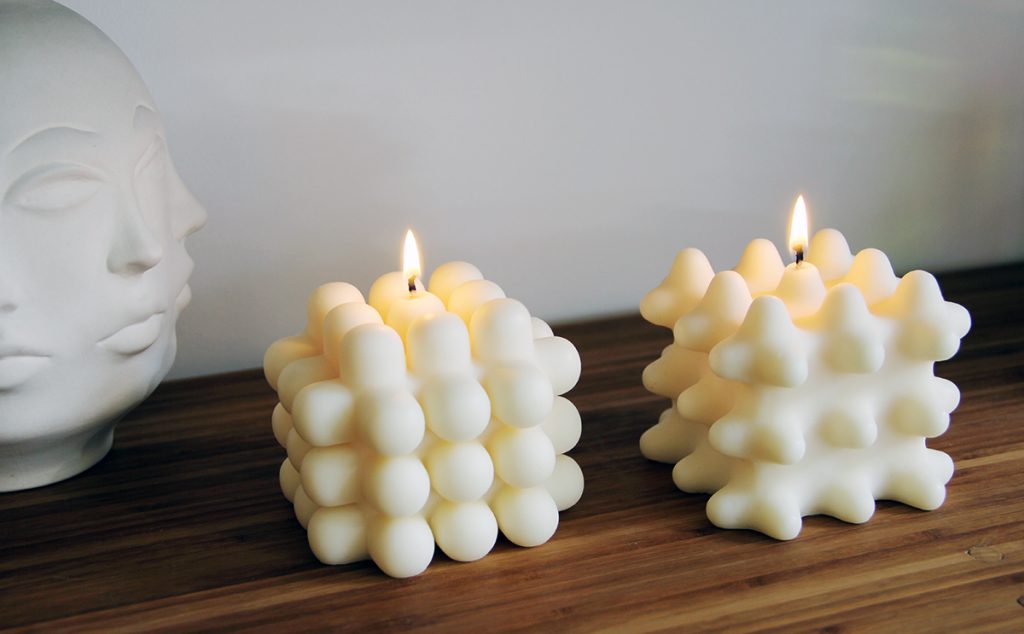Candle-making is a fun activity that over the years has grown a lot. According to some studies, the Australian Candle Market has a growth of 11.11% in value shipments in 2022 in comparison to 2021, and an increment of 8.88% CAGR in 2022 when compared to a period of 2017. So, if you like many others are into this prosperous business occupation, aside from investing in some obvious supplies, you really shouldn’t forget about candle-making moulds.
These functional supplies are extremely useful since they have a ‘special power’ to give candles a large selection of shapes and designs. And, even though in the past the shape of candles was basic and ordinary, nowadays you can choose from a large selection of candles ranging in shape thanks to the large selection of moulds. And while the shape of moulds is crucial for their appearance and appeal, you really should pay more attention to the moulds’ material.
Which Mold Is Best for Candle Making?

These days, making candles is pretty easy because of the large selection of versatile and easy-to-use candle moulds, but the key to choosing the right one is considering their material. All models are seamless, flexible and easy to use, allowing you to achieve just the needed effect. You just need to take into account all materials and pick the ones you consider the best for your needs.
Aluminium
Even though some other metals can be used for the purpose, it seems that aluminium is among the most commonly used metals for candle making. These moulds are extremely durable and resistant to high temperatures which makes them perfect for repetitive use as long as you need. Usually, they come as one-piece simple moulds that have no design or patterns on them.
Practice shows that these moulds can help you create high-quality and smooth-sided candles because of their great unmoulding capacity. Being a metal means that moulds made from aluminium are a bit pricier when compared to other materials, however, their durability, quality and result cannot be compared with anything else. The only downside is that they come in simple shapes with no design on them, and they aren’t compatible with beeswax.
PVC
PVC (polycarbonate) or plastic moulds are light and durable, and they’re one of the most commonly used moulds for candle making. Even though they’re considered heat-resistant, they aren’t as resistant as aluminium, so it’s said that they can resist up to 120 °C. They’re transparent and ideal for making coloured candles, but just like aluminium, PVC moulds aren’t compatible with beeswax.
Unlike metal moulds, these can be available as one and two-piece moulds, so you can use them depending on the type of candle you want to make. For a standard candle type you can use the one-piece mould, and for a more complex one, you can choose the two-piece mould. PVC moulds are available in numerous shapes and sizes and provide a simple, easy and smooth unmoulding.
Silicone
Silicone moulds are another popular choice not only in the candle-making market but also in the food industry as well. They’re lightweight, easy to use and clean types of moulds that can allow for making candles from different types of waxes, even from beeswax.
When compared to the other types, silicone moulds allow for achieving even some complex details which is something that cannot be achieved with aluminium and PVC moulds. When cleaned and handled properly, they can last you many years, however, if you don’t take good care of them, they won’t handle their shape.
Latex
Latex moulds for making candles are recommended only for original candle shapes. Candles made in latex moulds are beautiful and appealing, with precision in details. An important thing to have in mind about these moulds is that they aren’t recommended for use with stearin. This is because stearin tends to stick to the latex material, which makes it difficult to remove the candle from the mould. Therefore, latex moulds are mostly used for paraffin or beeswax candles.
How to Clean Them?

Regardless of the type of the type of mould material you choose, cleaning them properly and regularly is of vital importance in order to prevent wax buildup. To clean silicone moulds, all you need is soap and water to wash them by hand, or you can simply toss them in the dishwasher which can save you a lot of time. Once clean, dry them thoroughly and keep them in a dry and cool place. The same cleaning procedure can be used with both aluminium (or any other metal) and PVC moulds, whereas the latter should only be cleaned by hand.
When clean, all of them should be stored in a cool and dry place. This goes especially for silicone moulds since humidity can deform and misshape them. In case you need to store them in a more humid environment, make sure to place them in an airtight container to avoid further damage.












